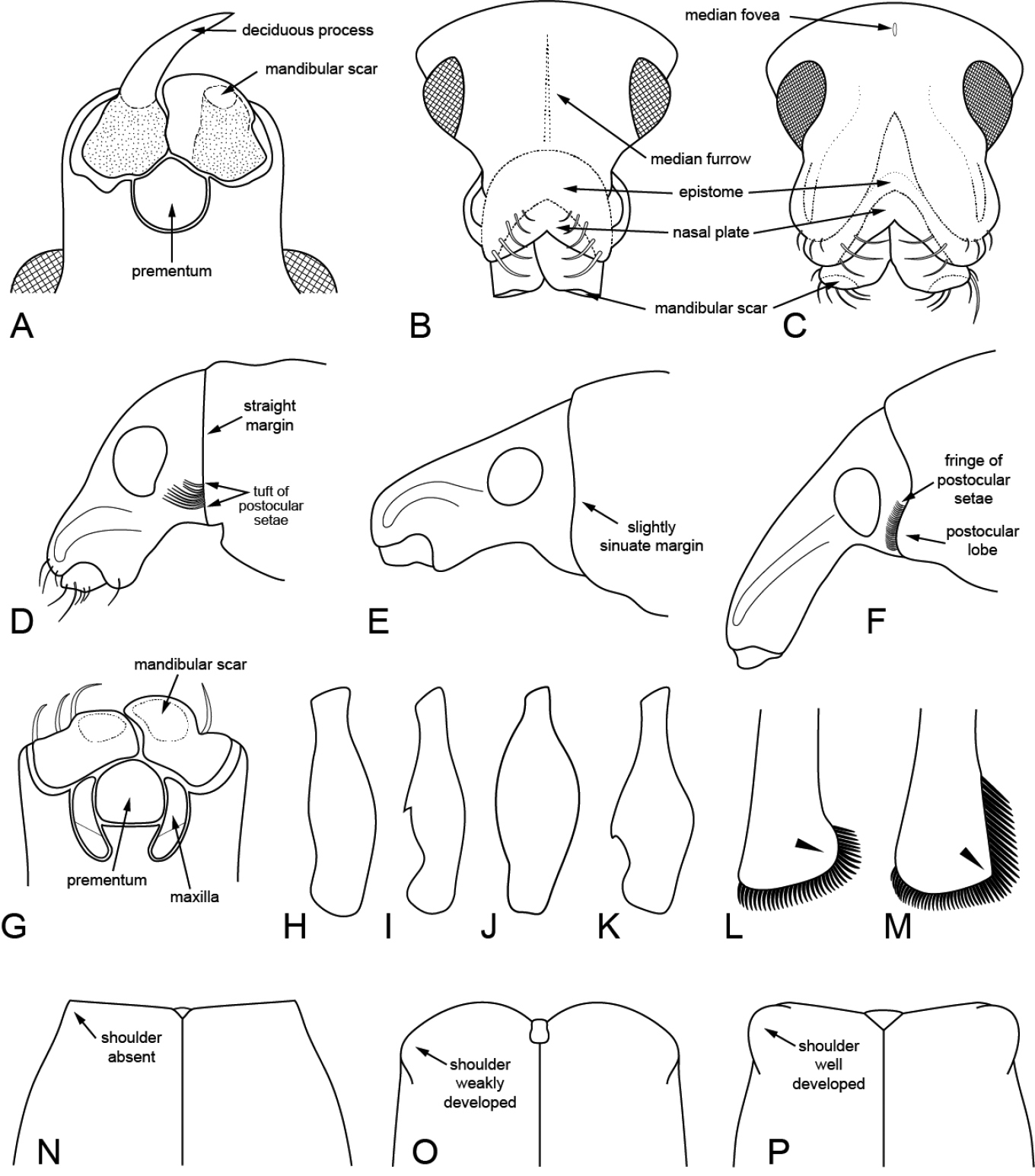
|
||
|
Select morphological features of Entiminae: A, G ventral view of rostrum: A right deciduous process still attached, left mandible with mandibular scar, maxillae fully covered by prementum (Naupactini) G mandibular scars well developed, maxillae partially covered by prementum (Anypotactus sp.) B, C frontal view of head indicating position of epistoma, nasal plate and mandibular scars: B Naupactini, with median furrow C Eustylini, with median fovea D–F lateral view of head and anterior section of prothorax: D Tanymecini, with anterior margin of prothorax straight and postocular setae clustered as a tuft E Eustylini, with anterior margin of prothorax slightly sinuate and without postocular setae F Lordopini, with anterior margin of prothorax strongly sinuate as to form well-developed postocular lobe, with postocular setae forming a fringe H–K profemora in frontal view (top end of drawings articulate to coxa, bottom end articulate to tibia): H Compsus sp., regularly shaped profemur I Eustylus sp., toothed profemur J Hadromeropsis sp. enlarged profemur K Anypotactus sp., clavate and toothed profemur L, M apical region of left metatibia (left margin on drawing is anterior (inner) in the beetle; right margin on drawing is posterior (outer) in the beetle), black triangles indicate posterior corner of metatibia: L Eustylini, posterior corner of metatibia rounded M Naupactini, posterior corner of metatibia angulate N–P anterior section of elytra in dorsal view: N shoulders absent O shoulders oblique, weakly developed P shoulders well developed. |